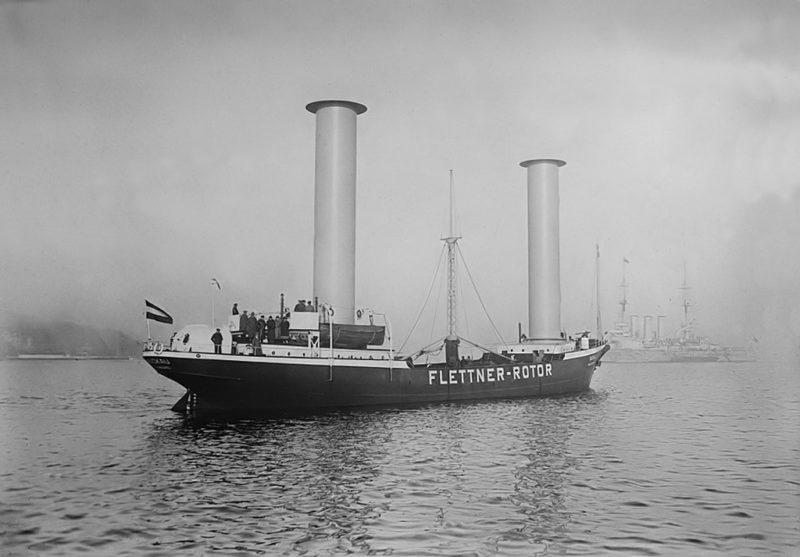
Transportation is still heavily reliant on fossil fuels, so it’s not surprising that shipping companies are always looking for ways to reduce operating costs. Improved fuel efficiency has the added advantage of reducing carbon dioxide (CO2) emissions in this era of concern about climate change. Regardless of any voluntary improvements it’s made, the shipping industry faces a new regulatory burden in 2023 as the European Union introduced an emissions tax.
For centuries wind provided free, albeit inconsistent, power for sailing ships. Alone, it’s not nearly strong enough to move modern cargo vessels at a suitable speed, but a novel method of auxiliary propulsion harnessing the wind can be seen on some cargo ships and ferries. This makes use of a force discovered over a century ago.

Experimental scientist Heinrich Magnus researched a force on spinning spheres and cylinders in the 1850s. Known as the Magnus Force, it can be observed when a ball is kicked or hit such that it spins, curving its trajectory. In the next century, aviation engineer Anton Flettner tried to apply this effect to aeroplanes and realised it could be utilised on ships when wind speed and direction is favourable. Flettner’s insight is that when air flows around the cylinder it’s deflected in the direction of spin on one side, while on the other it’s slowed against the spin. Consequently, the air exerts a force on the cylinder towards the faster, lower pressure, air.

Sign-up today to read the full article!
Simply click below to sign-up and read the full article, as well as many others, instantly!





Comments
Sorry, comments are closed for this item